Archive
Edith Tudor-Hart
- Edith
- Tudor-Hart
Edith Suschitzky
- 28-08-1908
- Vienna (AT)
- 12-05-1973
- Brighton (GB)
- Photographer
The Viennese photographer Edith Tudor-Hart emigrated to England in 1933 and made a name with her photographs focusing on questions of class, social exclusion and the lives of marginalised people.
Word Count: 29
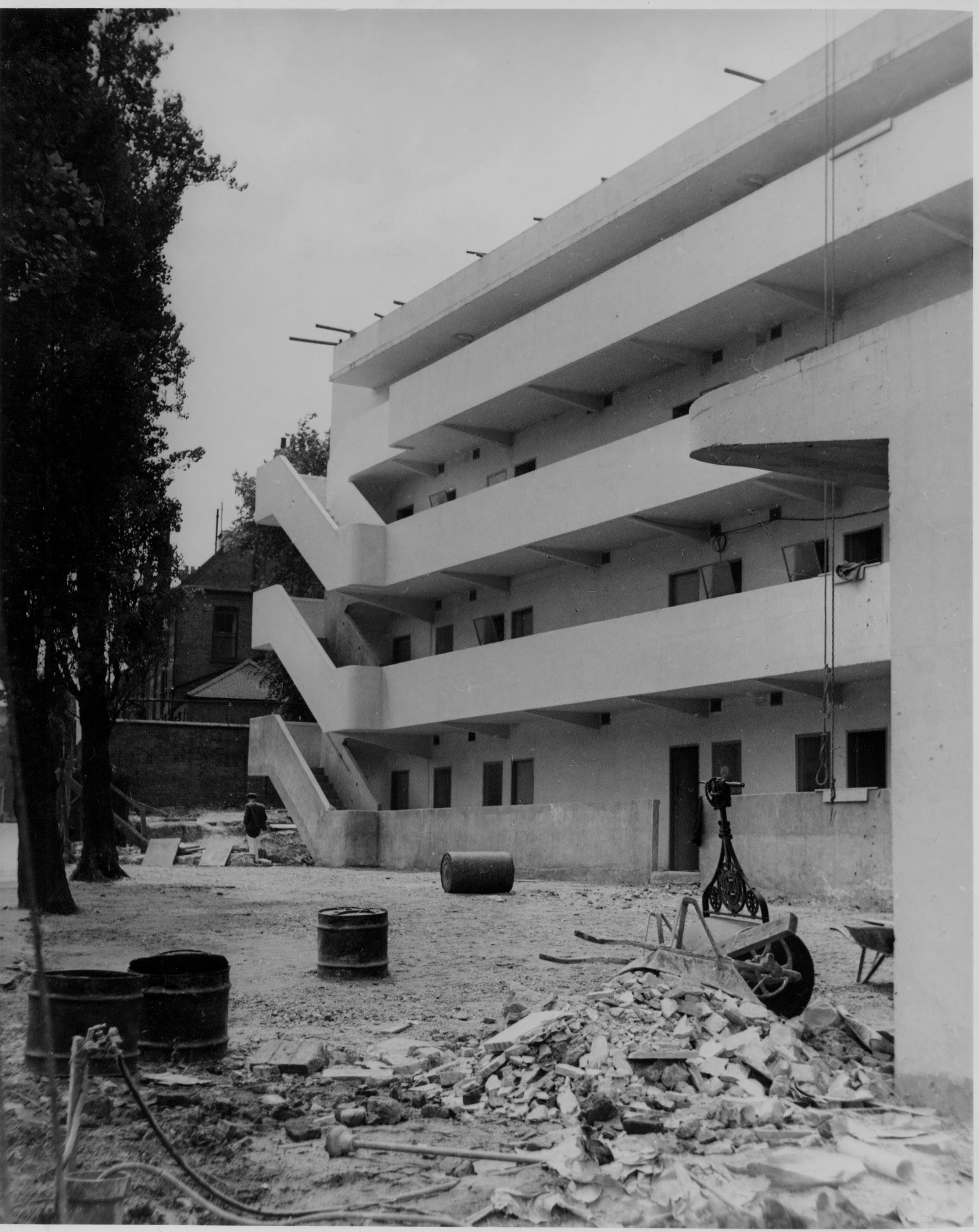
Edith Tudor-Hart took a series of photographs of the construction and opening of Lawn Road Flats in 1934 (Pritchard Papers, University of East Anglia, © The Estate of Wolfgang Suschitzky). 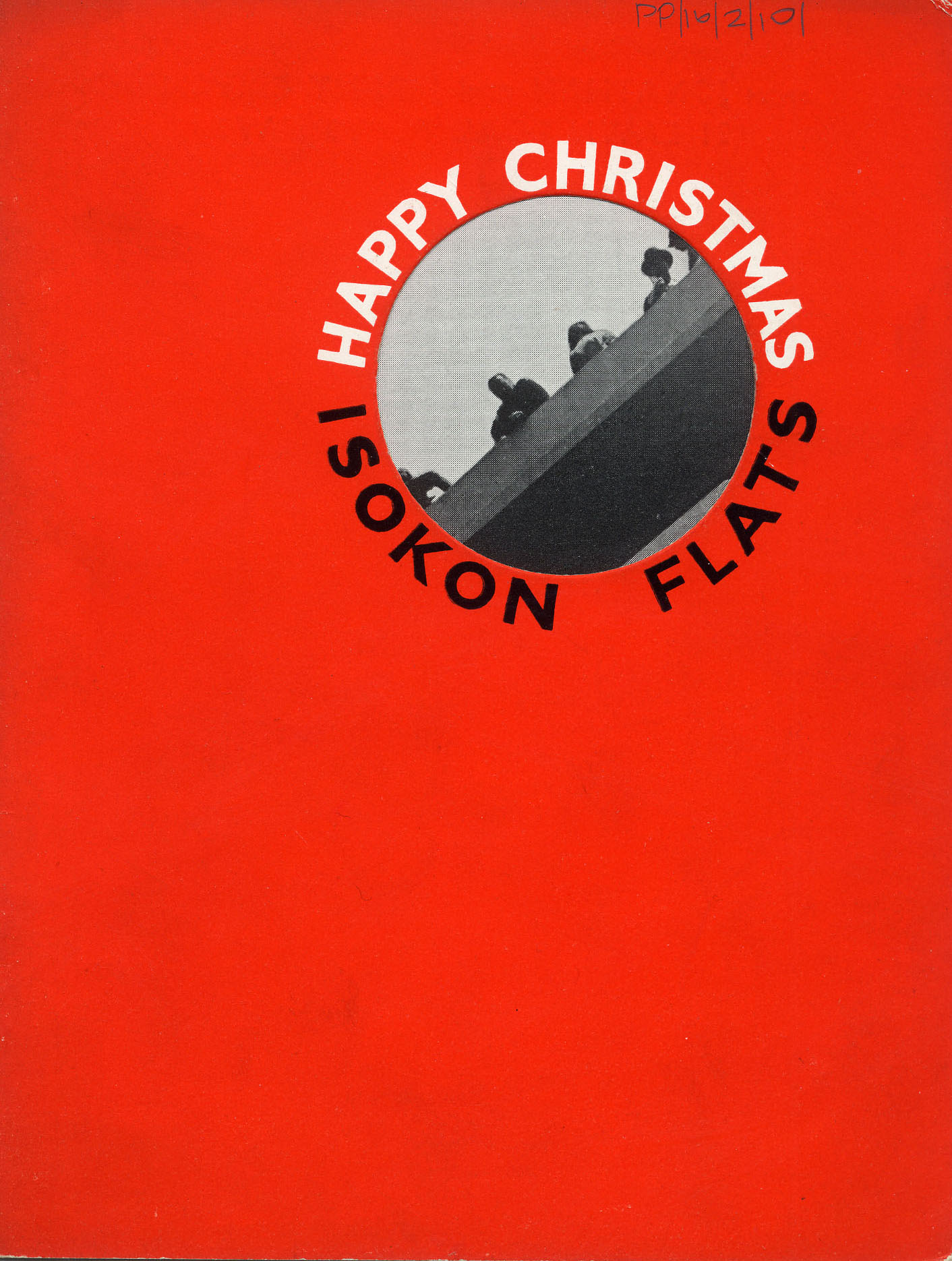
Edith Tudor-Hart, Lawn Road Flats’ Christmas card, 1934, cover (Pritchard Papers, University of East Anglia, © The Estate of Wolfgang Suschitzky). 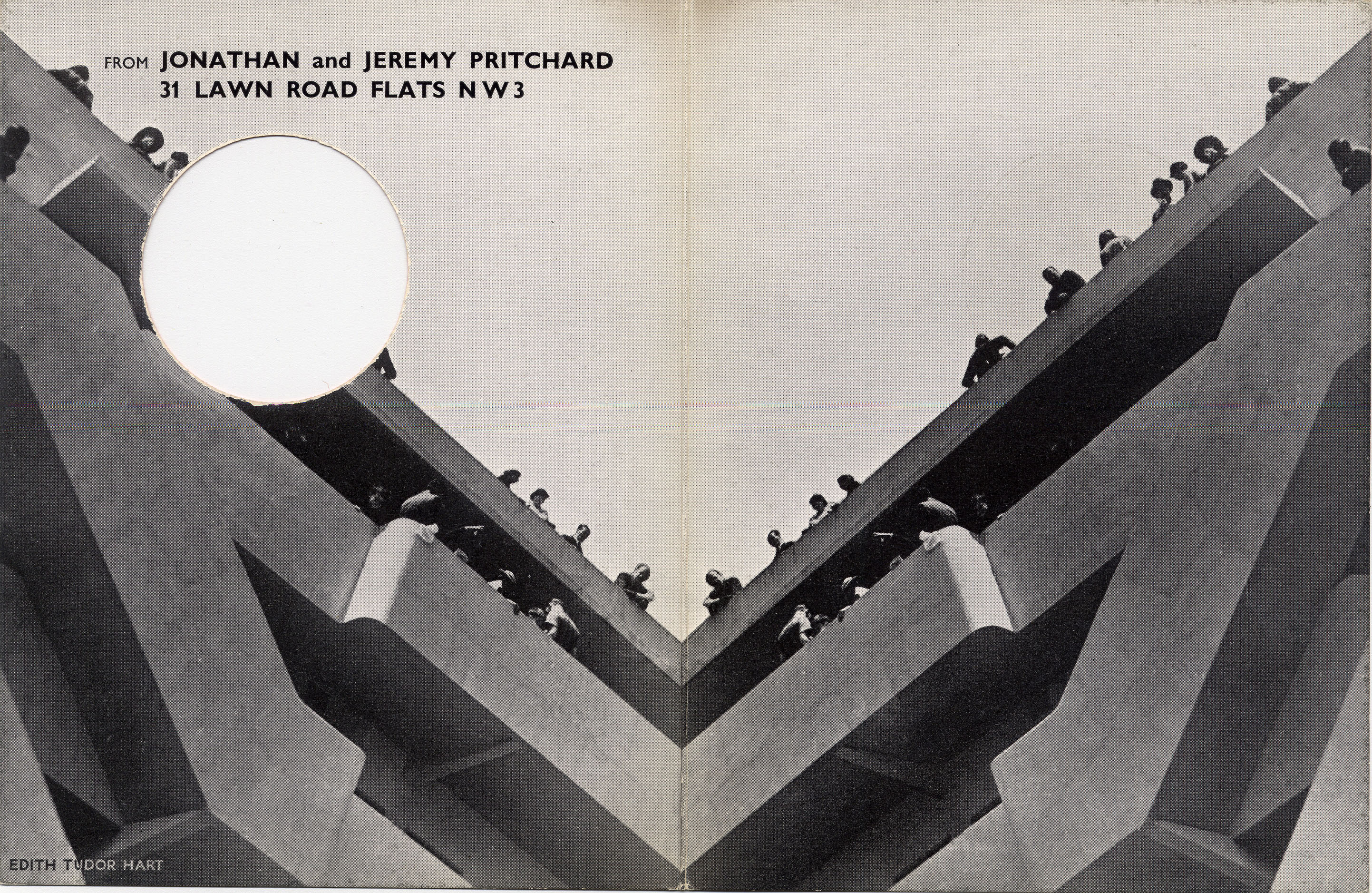
Edith Tudor-Hart, Lawn Road Flats’ Christmas card, 1934, inside (Pritchard Papers, University of East Anglia, © The Estate of Wolfgang Suschitzky). 
Edith Tudor-Hart, Gee Street, Finsbury, London, c. 1936, in Wal Hannington’s The Problem of the Distressed Areas, Left Book Club Edition, 1937, pl. 23 (© The Estate of Wolfgang Suschitzky). 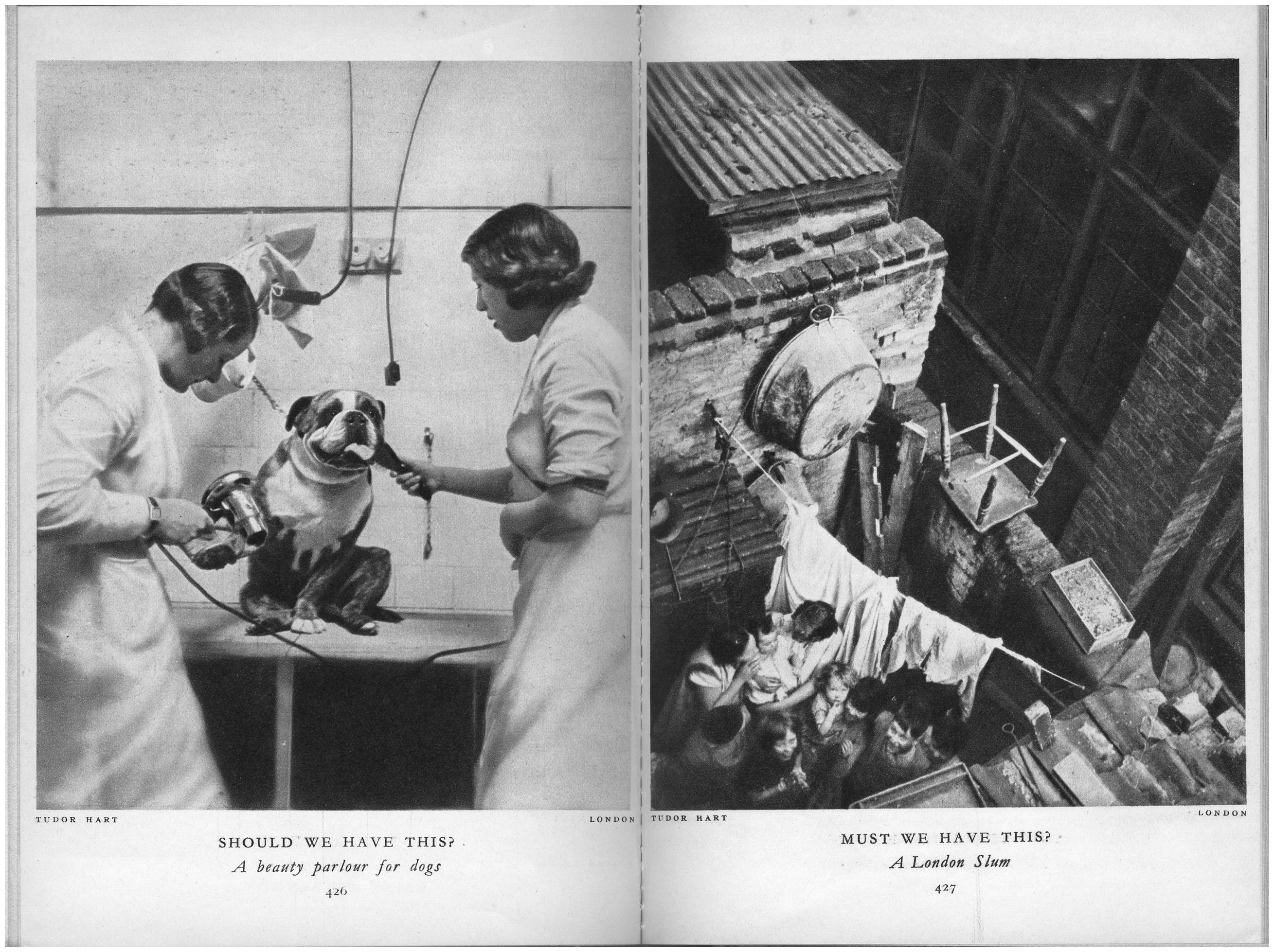
Lilliput, vol. 4, 1939, p. 426: “Should we have this? A beauty parlour for dogs”, photo: Edith Tudor-Hart, c. 1937 and p. 427: “Must we have this? A London slum”, photo: Edith Tudor-Hart, c. 1936 (© The Estate of Wolfgang Suschitzky). 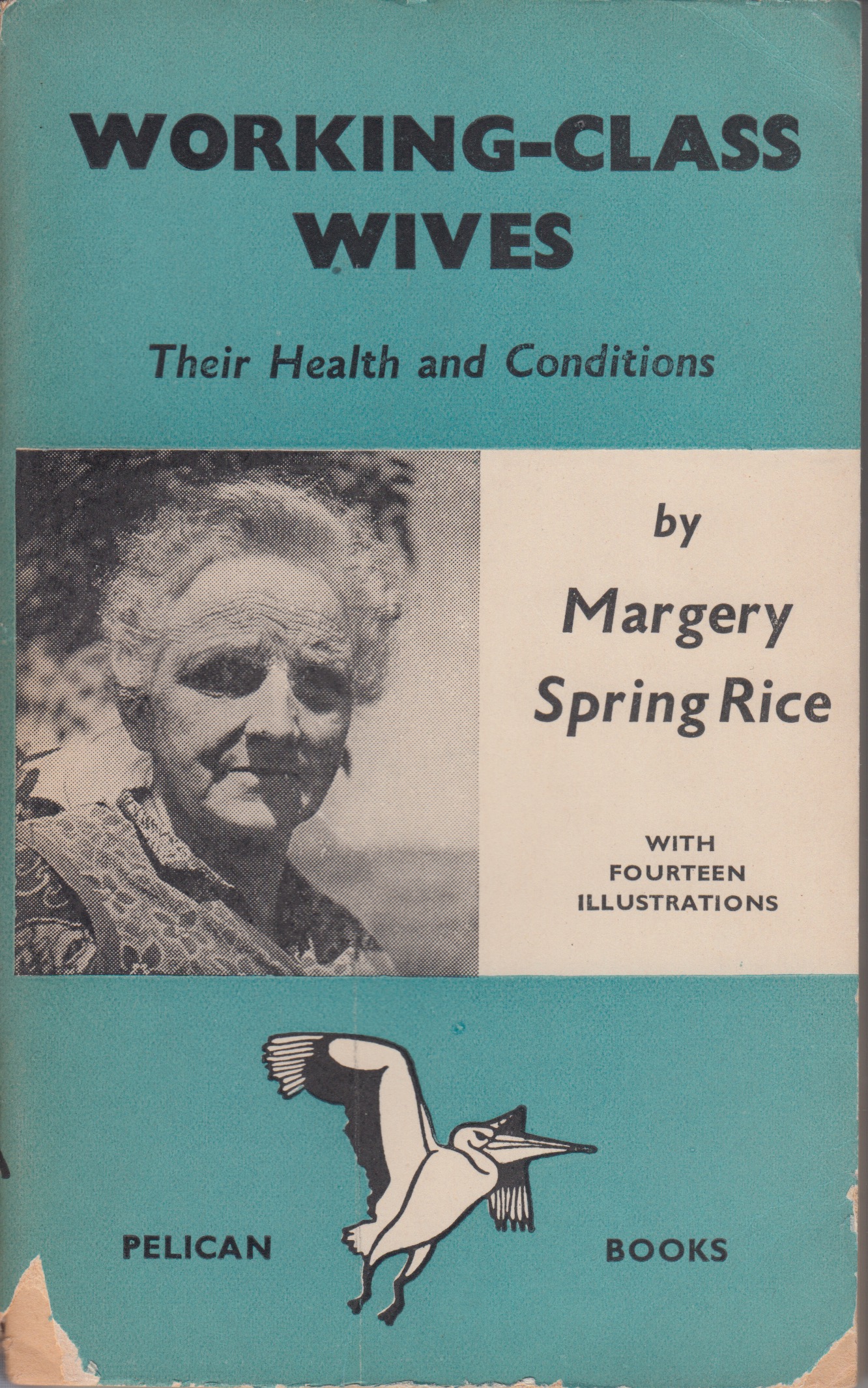
Margery Spring Rice. Working-Class Wives. Their Health and Conditions. Penguin Press, 1939, cover with photograph by Edith Tudor-Hart (© The Estate of Wolfgang Suschitzky). 
Margery Spring Rice. Working-Class Wives. Their Health and Conditions. Penguin Press, 1939, pl. 2–4: photographs by Edith Tudor-Hart (© The Estate of Wolfgang Suschitzky). Forbes, Duncan. “Politics, Photography and Exile in the Life of Edith Tudor-Hart (1908–1973).” Arts in Exile in Britain 1933–1945. Politics and Cultural Identity (The Yearbook of the Research Centre for German and Austrian Exile Studies, 6 (2004)), edited by Shulamith Behr and Marian Malet, Rodopi, 2005, pp. 45–87.
Forbes, Duncan. “Edith Tudor-Hart in London.” Edith Tudor-Hart. Im Schatten der Diktaturen, edited by Duncan Forbes, exh. cat. National Galleries of Scotland, Edinburgh, 2013, pp. 65–74.
Jungk, Peter Stephan. Die Dunkelkammern der Edith Tudor-Hart. Geschichten eines Lebens. S. Fischer, 2015.
McGrath, Roberta. “Pass Nummer 656336.” Edith Tudor-Hart. Im Schatten der Diktaturen, edited by Duncan Forbes, exh. cat. National Galleries of Scotland, Edinburgh, 2013, pp. 119–125.
Pearlman, Jill. “The Spies Who Came into the Modernist Fold: The Covert Life in Hampstead’s Lawn Road Flats.” Journal of the Society of Architectural Historians, vol. 72, no. 3, September 2003, pp. 358–381. University of California Press, doi: https://doi.org/10.1525/jsah.2013.72.3.358. Accessed 11 April 2021.
Suschitzky, Wolf. “Edith Tudor Hart.” Edith Tudor Hart. Das Auge des Gewissens (Das Foto-Taschenbuch, 6). Dirk Nishen Verlag, 1986, pp. 8–26.
Word Count: 160
Edith Tudor-Hart collection at the National Galleries Scotland, Edinburgh.
Word Count: 9
My deepest thanks go to Bridget Gillies (University of East Anglia Archive) for supporting me with images from the Pritchard Papers and to Peter Suschitzky who gave me permission to reproduce the works of Edith Tudor-Hart.
Word Count: 36
GB (1933–1973).
158 Haverstock Hill, Hampstead, London NW3 (studio, 1937–?).
- London
- Burcu Dogramaci. "Edith Tudor-Hart." METROMOD Archive, 2021, https://archive.metromod.net/viewer.p/69/1470/object/5138-7554743, last modified: 20-06-2021.
-
Anna FreudPsychoanalystLondon
The psychoanalyst Anna Freud and her partner Dorothy Burlingham-Tiffany opened the War Nursery research and care facility in Hampstead in January 1941 under the impact of the bombing of London.
Word Count: 29
Wolf SuschitzkyPhotographerCinematographerLondonThe Viennese Wolf Suschitzky made a career as a photographer and cinematographer after emigrating to London in 1935.
Word Count: 17
My Life, My StageBookLondonMy Life, My Stage is the autobiography of costume and set designer Ernest Stern, looking back on his career with director Max Reinhardt, his escape to London and his internment.
Word Count: 30
LilliputMagazineLondonThe magazine Lilliput, founded by the émigré journalist Stefan Lorant in 1937, gave work to emigrated artists and photographers such as Kurt Hutton, Walter Suschitzky, Walter Trier and Edith Tudor-Hart.
Word Count: 29
Isokon CompanyArchitecture and Furniture CompanyLondonThe furniture design and architecture company Isokon was an important commissioner for emigrants such as Marcel Breuer, Walter Gropius, László Moholy-Nagy, Ernst Riess and Edith Tudor-Hart.
Word Count: 27
Aid to RussiaExhibitionLondonThe Aid to Russia exhibition was organised in 1942 by the emigré architect Ernö Goldfinger and his wife, the painter Ursula Goldfinger, at their house in Hampstead.
Word Count: 26
Ellen AuerbachPhotographerNew YorkWhen she arrived in New York in 1937, the German-born photographer Ellen Auerbach (formerly Rosenberg) had already passed through exile stations in Palestine and Great Britain.
Word Count: 25
A Hundred Years of Photography 1839–1939BookLondonSix years after her arrival in London, the photographer Lucia Moholy published her book A Hundred Years of Photography 1839–1939, on the occasion of the centenary of photography.
Word Count: 27